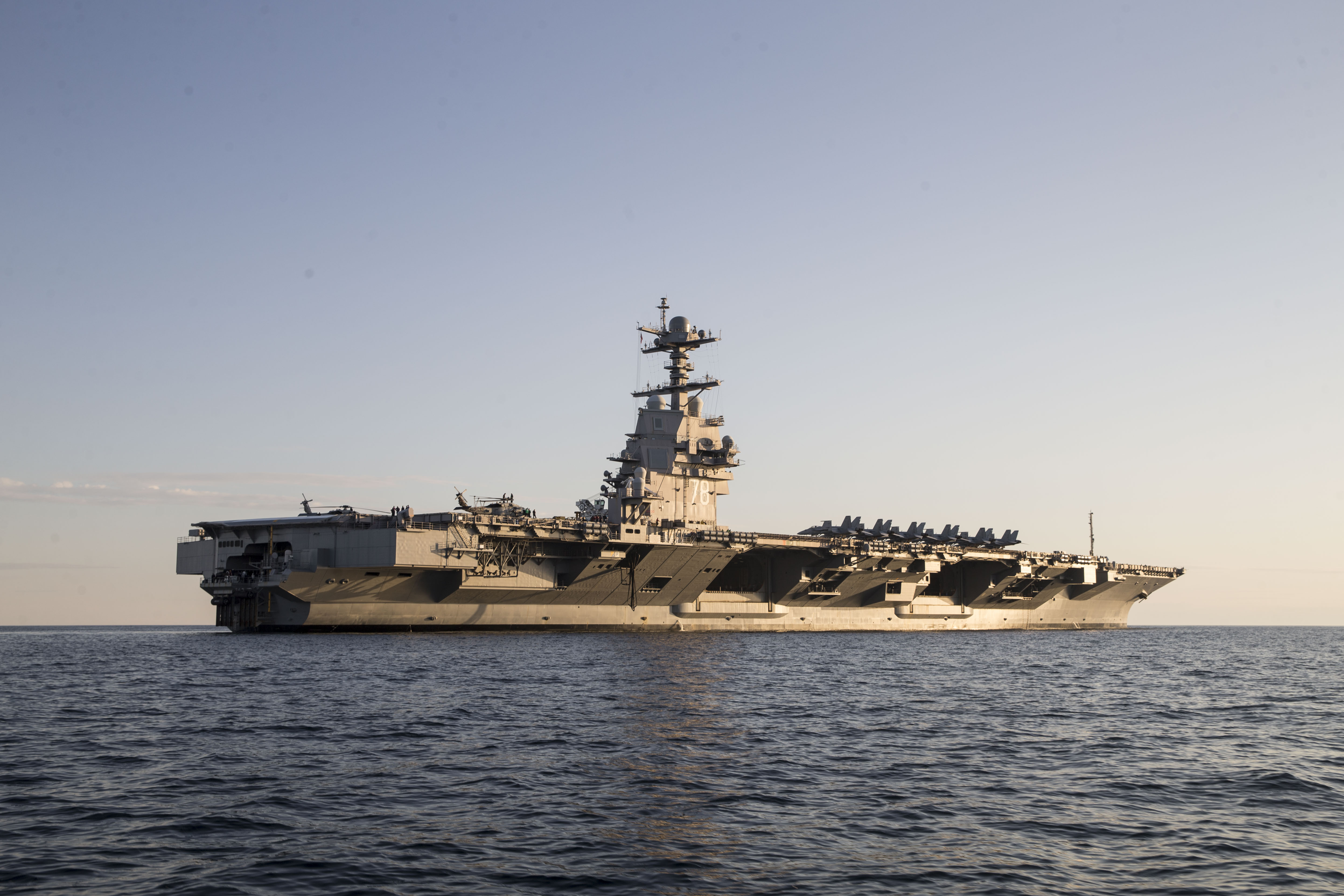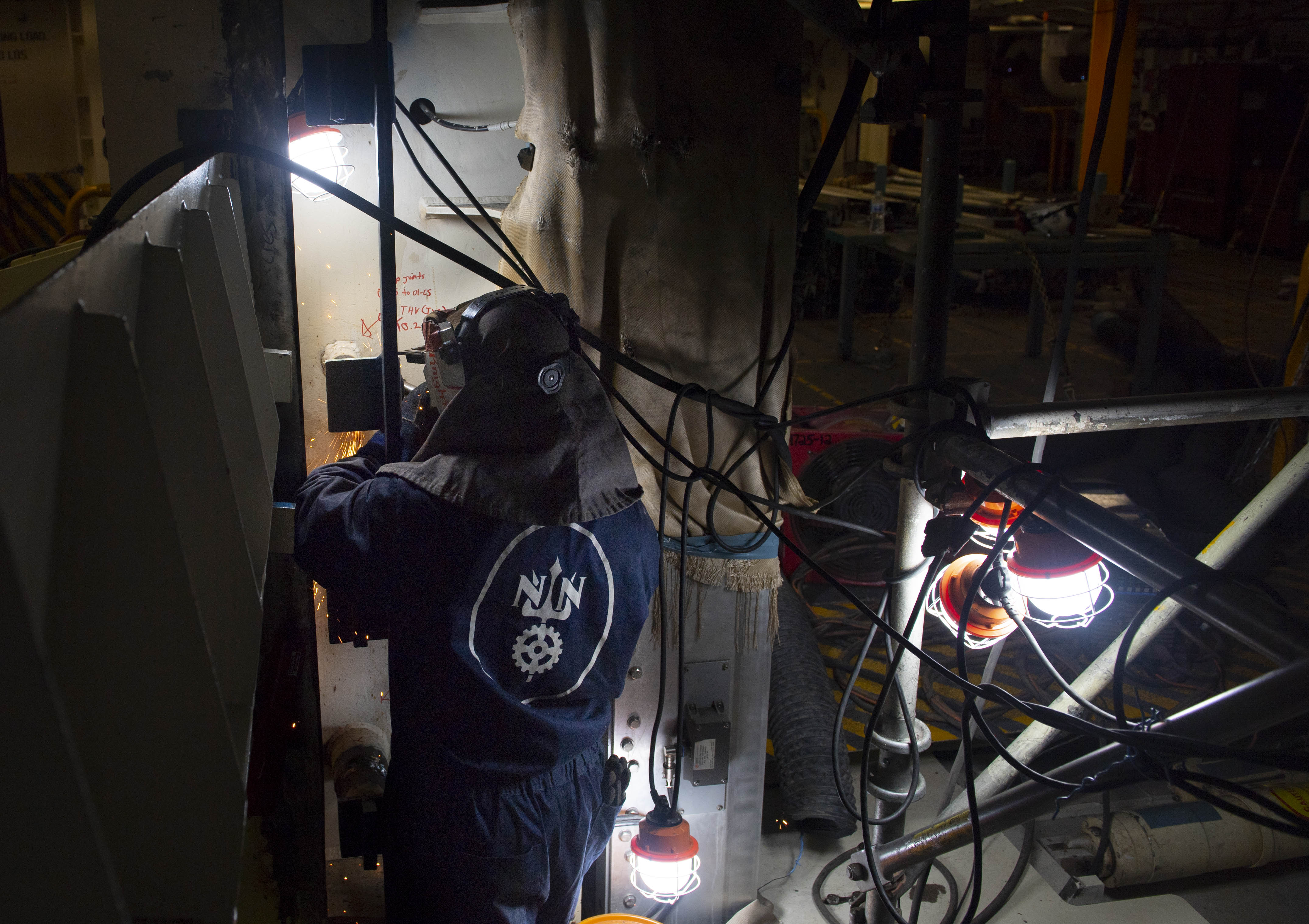
Maintenance teams working on aircraft carrier USS Gerald R. Ford (CVN-78) are accomplishing about 30 percent more work than planned during in-ports periods between underway testing, helping to reduce the amount of time the carrier will likely spend in the repair yard after full-ship shock trials next year and becoming a fully available fleet asset.
Though not unique to Ford, the new carrier has already seen work deferred – with delivery running behind, some work was pushed to the carrier’s post-shakedown availability; when PSA ran long, some work was pushed to the current post-delivery test and trials period or the planned incremental availability that Ford will go through after shock trials.
But now that the Newport News Shipbuilding-led maintenance crew is moving in the other direction, getting ahead on the workload and eating away at the to-do list during the PIA that stands between the ship’s testing phase and its entrance to the operational fleet, Assistant Secretary of the Navy for Research, Development and Acquisition James Geurts told reporters today.
During the most recent window of opportunity in port, called WOO 10, the team accomplished 126 percent of the workload that was predicted for that time period, ending on May 9. During WOO 9 the team performed 128 percent of the planned work, and during WOO 8 the team performed 136 percent of the planned workload.
“We are not only getting more work accomplished than planned, but we’ve actually been buying back work we had planned for our future availability,” Geurts said.
“About 10 percent of the work we had planned to do at the end of the post-delivery test and trials period, we’ve already been able to accomplish. A lot of that is where there’s modernization work, upgrades of computers and whatnot, and a lot in the tank and void inspections. And so what was a plan of about 344 of those inspections, we think we will be able in the PDT&T period to knock down a great number of those, so we’ll have about 137 is what we’re tracking right now in PIA” after the shock trials, he added.

Ford was originally supposed to conduct its maiden deployment in 2018, but delays during its construction significantly pushed back that timeline, and more recent delays with the ship’s advanced weapons elevators and nuclear reactor slowed the PSA maintenance period timeline and risked further delays to the maiden deployment timing. Lawmakers had been told that Ford is now set to deploy in 2024, though the Navy pushed back on that timeline and said it could be sooner.
Ford will undergo its full-ship shock trials in the summer of 2021, Geurts said. Following that test, where live ordnance will be exploded near the ship to ensure the hull and its warfighting systems can survive a hit, the ship will go through another maintenance period, the duration of which will depend on how much damage the ship sustains during the shock trials. Once out of maintenance, the ship would still have to begin basic training with the crew and work towards integrating with an air wing and carrier strike group for the maiden deployment.
Though the boost in productivity of the maintenance team on the ship now won’t affect the schedule for shock trials, it will help speed up the post-trials maintenance period.
Geurts said he wanted to “get any of that work done now while … this team is really really clicking, that way we can, again, turn Ford around after that periodic availability faster and not get bogged down after the shock trials.”
Geurts said the current crew has also been working hard during at-sea time on the carrier, thoroughly testing all the new systems on board and working through how to operate them most efficiently. Geurts said the crew earlier this week set a record for how many planes it caught with the Advanced Arresting Gear (AAG) and launched with the Electromagnetic Aircraft Launch System (EMALS) – 167 combined catapults and trap landings in one day, compared to a previous record of 135 during another recent at-sea day.
The carrier is getting ready to bring the air wing on in about two weeks for full cyclic operations. In addition to continuing to refine operations with the new AAG and EMALS systems, the ship’s crew will also get to start working through the process of bringing ammunition up to the flight deck and loading it on aircraft. Delays on the advanced weapons elevator construction meant that, until last month, the crew did not have the ability to move weapons from the lower magazines directly to the flight deck. The first lower elevator on Ford was certified last month and now connects the aft magazine to the flight deck. A second lower elevator connecting the forward magazine to the flight deck should be complete by the end of the fiscal year, Geurts said.





